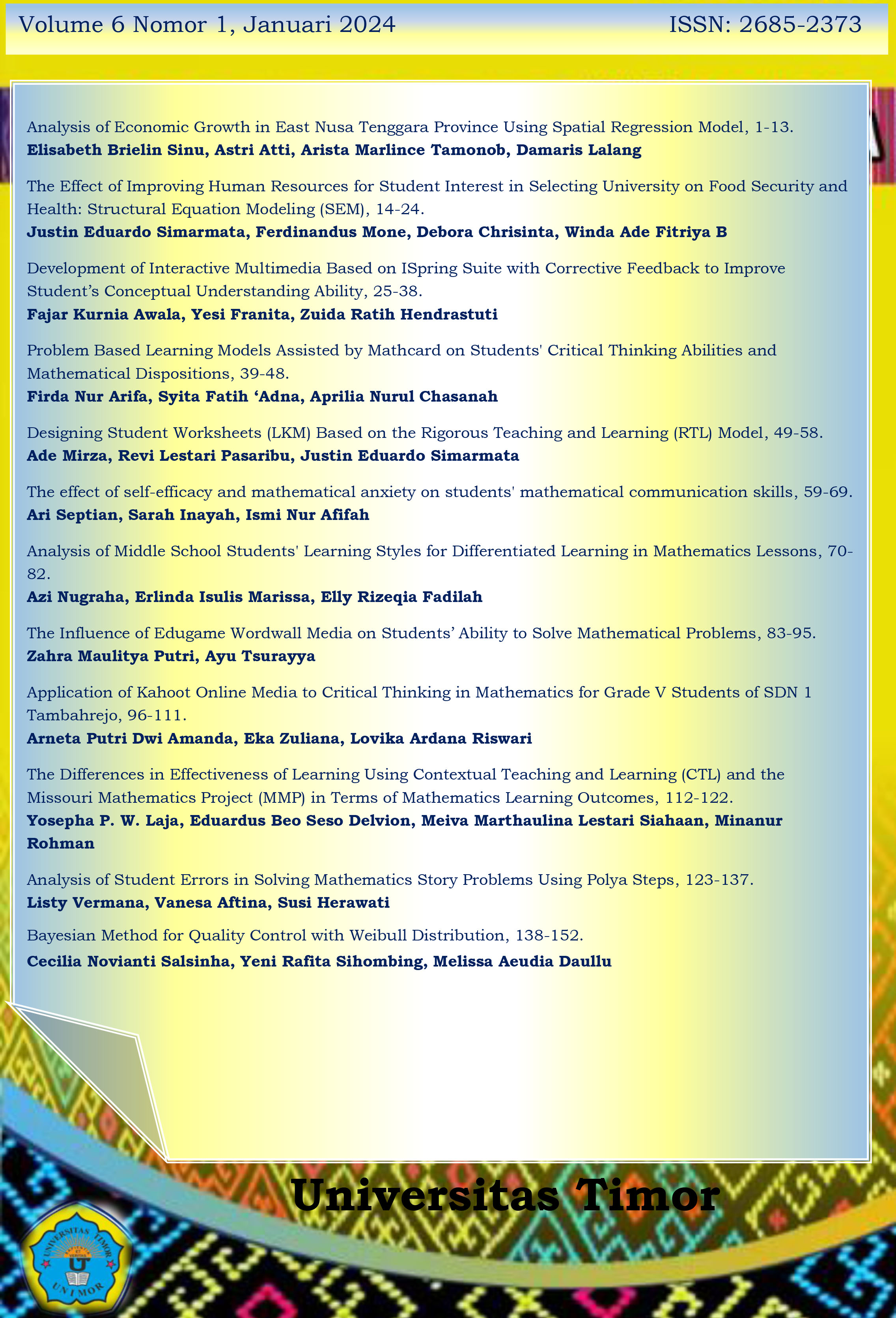Analysis of Economic Growth in East Nusa Tenggara Province Using Spatial Regression Model
Main Article Content
Abstract
This research aims to examine the significant factors influencing economic growth in the East Nusa Tenggara Province. The estimation is carried out through a spatial regression model approach. The research variables were selected based on the economic growth model proposed by Mankiw-Romer-Weil, namely Gross Regional Domestic Product at constant prices (Y), Labor ( X1), Electricity Consumption (X2 ), Regional Original Income (X3 ), Capital Expenditure ( X4), and Schooling Duration (X5 ). The research data consists of secondary data from the year 2022 in 22 regencies/cities obtained from the Central Statistics Agency (BPS) of East Nusa Tenggara Province. Modeling with the Ordinary Least Squares (OLS) regression method resulted in three significant independent variables at α=5%: local revenue, capital expenditure, and average years of schooling. Based on diagnostic tests, there was spatial dependence in lag and error, leading to the use of Spatial Autoregressive Model (SAR) and Spatial Error Model (SEM) for spatial regression. From these spatial models, the significant independent variables influencing economic growth in the 22 regencies/cities in East Nusa Tenggara were local revenue, capital expenditure, and average years of schooling. The queen contiguity weighting was used. Based on R2 and AIC criteria, the best spatial regression model was the Spatial Error Model (SEM) with the highest R2 of 0.837610 and the smallest AIC value of 393.03. For further research, it is recommended to consider local factors that may influence economic growth, such as the sustainability of the agricultural or tourism sector, which may vary in each region.
Article Details
RANGE: Jurnal Pendidikan Matematika
